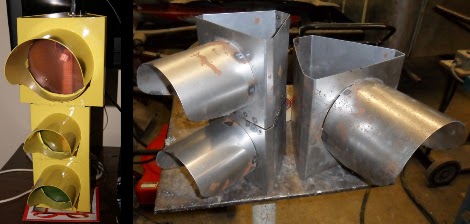
Without a doubt, Laser Projectors are a great way to project large, bright images on any surface you can imagine. With a high enough quality projector and software package, excellent images and visualizations can be displayed in real time. [marcan], of the openkinect project, decided that there were not any open source laser projection packages out there that suited his wants or needs, so logically he decided to write his own. Because home-made laser projectors often use the audio out port of a PC, building the framework on top of the JACK unix sound software to control the hardware made perfect sense. OpenLase includes plugins for audio visualizations, 2D and 3D gaming, as well as converting video streams into laser format in real time.
Be sure to check out the Chaos Communication Congress presentation [marcan] gave after the break, as well as all the extra demo videos on his website.
















